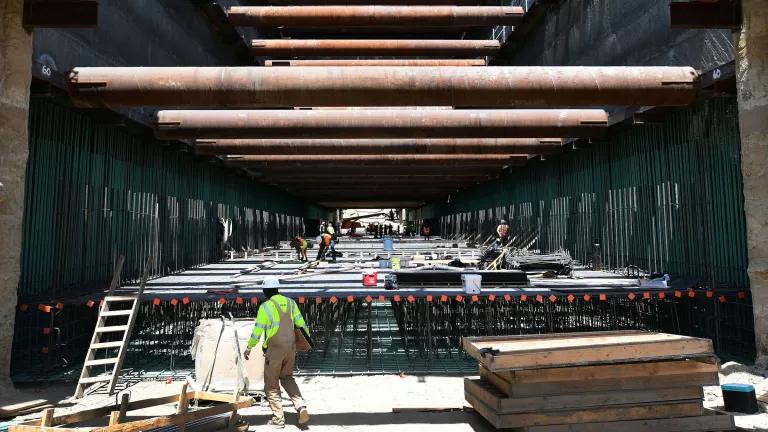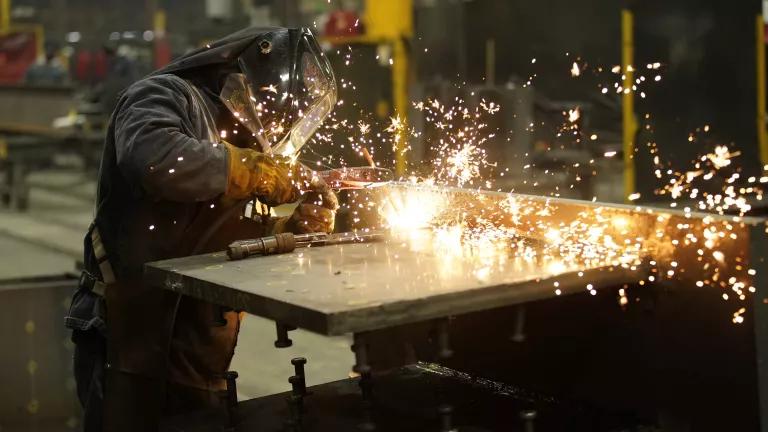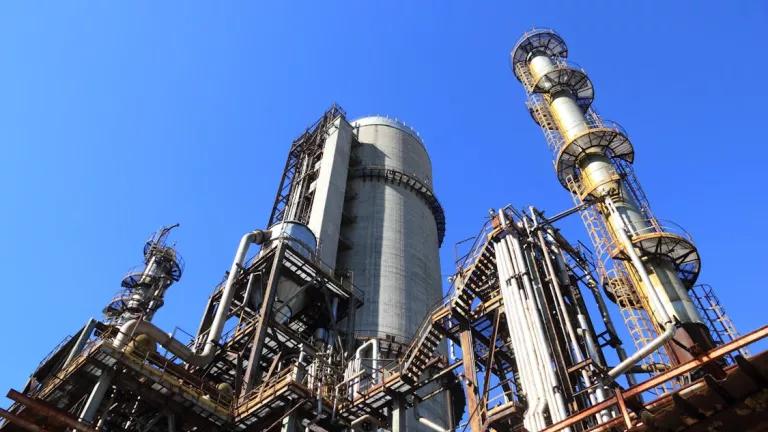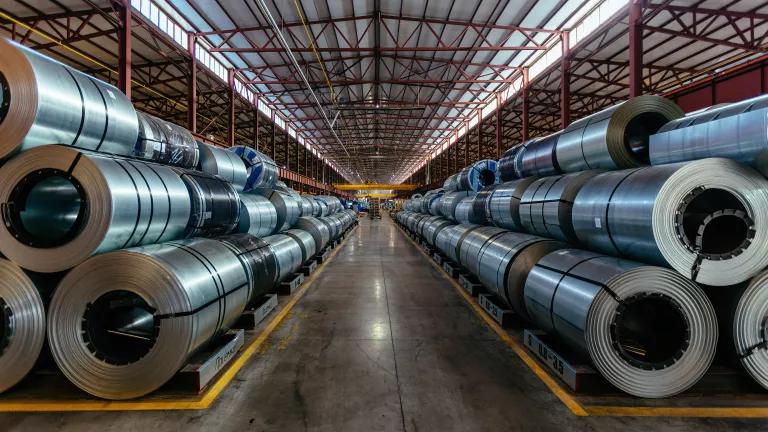Lightening Emissions in Heavy Industry: Reducing CO2 in Cement, Concrete, Steel, and Aluminum Can Help Keep Us on a Path to 1.5 Degrees

The industrial sector—which produces the materials that make up our built environment, such as cement, concrete, steel, and aluminum—is responsible for 30 percent of U.S. economy-wide greenhouse gas (GHG) emissions. Without strong measures to switch to clean technologies, that percentage is expected to increase, making it difficult to meet crucial net-zero emissions targets. Decarbonizing heavy industry is challenging. The sector is heterogeneous and heavily dependent on fossil fuels in applications that are not yet candidates for electrification, and many products have complex supply chains. Despite these challenges, cleaning up the sector offers an enormous opportunity to reduce pollution and invest in the global competitiveness of U.S. industrial manufacturing. NRDC and Evolved Energy Research modeling show that a 70 percent reduction in U.S. industrial GHG emissions is possible by 2050, helping to keep the United States on a path to a safe climate.
A broad uptake of existing solutions like energy efficiency and electrification (where available) can deliver modest but important near-term industrial GHG emissions reductions of roughly 35 percent below 2005 levels by 2030 in the United States. However, our analysis shows that the sector cannot achieve deeper levels of decarbonization without more investment in advanced technologies like industrial electrification, the use of hydrogen in steel manufacturing, and carbon capture and storage to abate emissions from cement manufacturing, all of which will require significant further innovation to unlock. With this in mind, this issue brief provides an overview of the cement, concrete, steel, and aluminum subsectors, including global CO2 footprint, primary production methods, key technologies and measures for reducing GHG emissions, and key policy tools for driving deep decarbonization.


